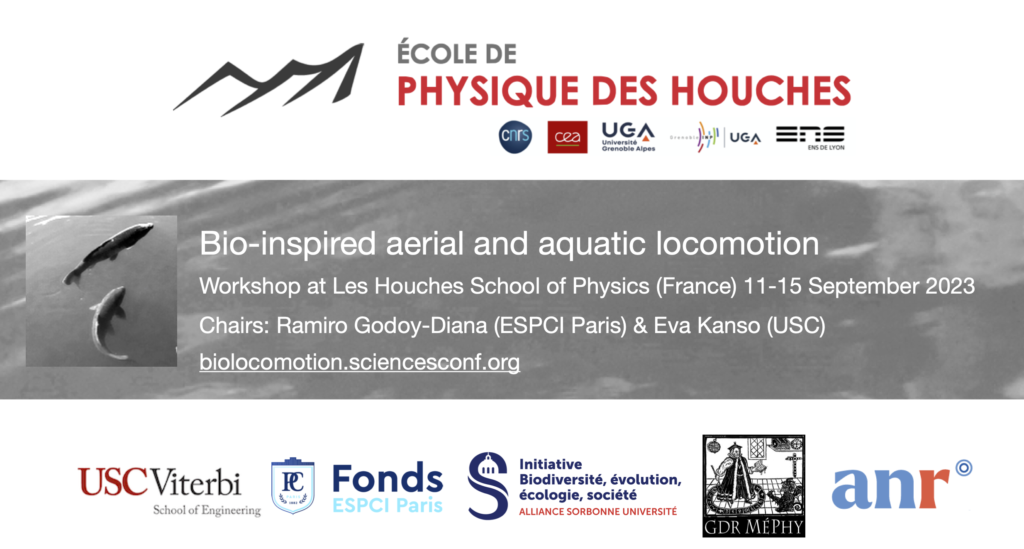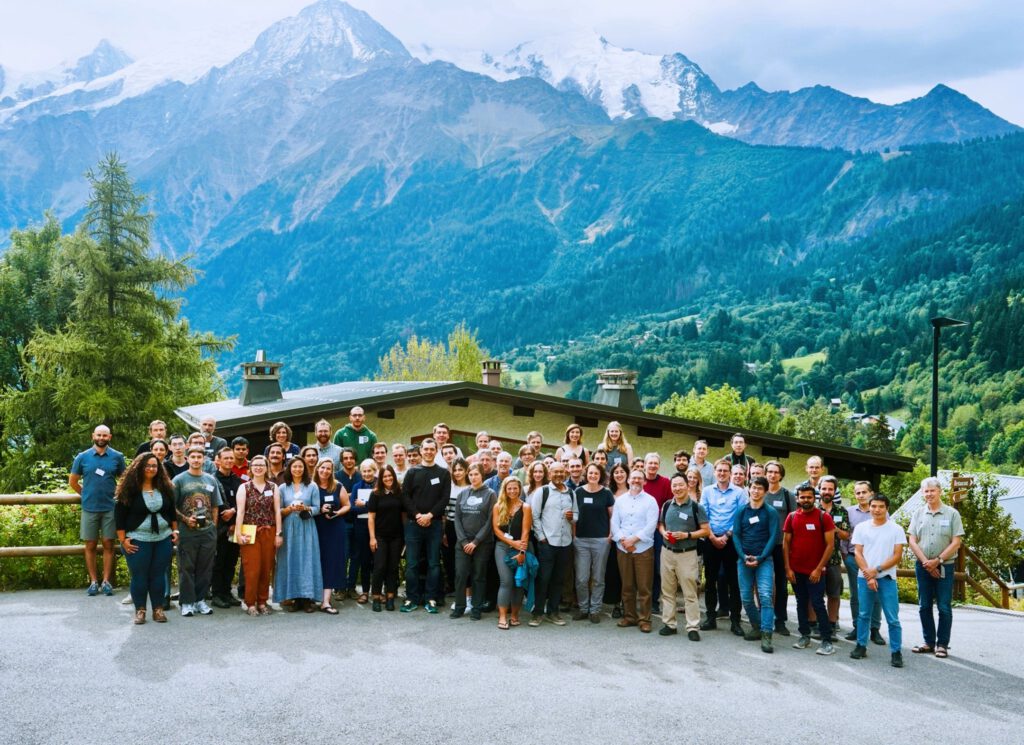
The study of the mechanisms underlying animal swimming and flying has long motivated research efforts in the physical and biological sciences. Beyond the simple goal of understanding the fundamental question of animal locomotion, these problems have also inspired developments in engineering. It has certainly become commonplace to mention Leonardo da Vinci’s sketches of flying machines in most lectures and courses dealing with bio-inspired mechanics. The last quarter century has seen a huge increase in work on these topics at the interface of physics and biology, driven in part by the democratization of experimental fluid mechanics tools in biology labs (notably particle image velocimetry and high-speed video).
The objective of this workshop was to provide a collective picture of the state of the art and to indicate the avenues of research that we envision for the future. We focused on the macroscopic side of the broad topic of biolocomotion in fluids. We addressed animal locomotion problems such as fish swimming or flapping flight, where fluid-structure interactions between a deformable body and its environment are placed in the context of vortex-dominated flows. In addition to the problem of pure locomotion, questions of interactions between individuals and collective behavior were widely considered. Beyond the (bio)mechanics of the bodies involved, their actuation and passive elastic responses, and the fluid forces of the environment, we also devoted part of the discussion to sensory feedback systems, which are an intrinsic part of these unsteady problems.
Check out the program and abstracts here: https://biolocomotion.sciencesconf.org/
Looking forward to other meetings with this great crowd!

